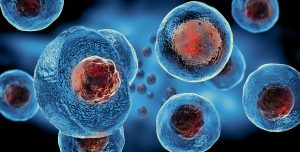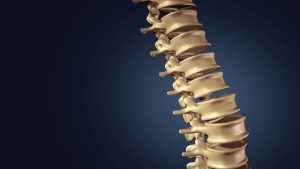
Embryonic Stem cells, Cellular Therapy
Research on human stem cells has achieved a lot since the cloning of Dolly the lamb and the identification of the human genome sequence. Stem cells can now be personalized and developed into specific cells for specific needs, and have developed an immense potential to help patients suffering from various conditions. This progress has ultimately created suspicion and awareness of ethical issues that can arise from this science.
The possibility of reproductive human cloning and acquisition of embryos through unjust means have prompted countries including Germany, Austria, Italy and many others to ban or restrict research in the stem cell field. Although the ethical issues surrounding this research are appropriate, stem cells can be used in very beneficial ways.
One method of generating specialized and personalized stem cells, called somatic cell nuclear transfer, can be used for therapeutic treatment and for further research of genetic diseases. This cloning technique of somatic-cell nuclear transfer can be used to successfully generate embryonic stem cells. Scientist Shoukrat Mitalipov from the Oregon National Primate Research Center, has generated positive results through research and studies of producing monkey and human embryos.
Mitalipov’s work has proven to create embryonic stem cells when caffeine is added to the somatic-cell nuclear transferred embryos. His method yields that 23% of somatic cell nuclear transferred embryos will form into blastocysts, which are embryos that have developed hundreds of cells. These blastocysts, can then be used to generate embryonic stem cells. And these embryonic stem cells can then become personalized or specialized according to needs of patients.
This development would be very beneficial therapeutically, but still raises concerns over reproductive cloning. But contrary to many beliefs that embryonic stem cells could be cultivated and used to clone humans, the current state of this science holds that these cells have little to no chance of further development. Mitalipov also performed studies on monkeys in order to resolve this belief. His study found that
“despite more than 100 tries, he and his colleagues have not managed to get any SCNT-derived monkey embryos to implant in a surrogate mother and trigger pregnancy. The cells that give rise to the placenta are underdeveloped in the cloned monkey embryos, he says, and the human SCNT embryos have similar abnormalities.”
These efforts provide evidence of how the current state of stem cells would not entertain reproductive cloning and if properly overseen this method of achieving embryonic stem cells remains appropriate.
This method as mentioned before, can be very useful for therapeutic treatment. A few areas it can prove very useful therapeutically include
“Restoring bone growth after bone injury. Restoring vision in retinal disease. Restoring nerve cell function in spinal cord injury. Restoring heart tissue after heart attack,”
and many genetic diseases such as Parkinson’s, Alzheimer’s, and cancers. One particular treatment embryonic stem cells can prove especially beneficial for is treatment for spinal cord injuries.

Skeletal Human Spine
According to reports by Vibhu Sahni and John A. Kessler published by the National Center for Biotechnology Information ,
“ES cells have been shown to have therapeutic benefits only when transplanted into experimental models of mild to moderately severe SCI (Spinal Cord Injury).”
This development would significantly help the countless people effected by spinal cord problems, although this treatment is not as effective for major spinal cord injuries. The number of Americans alone that suffer from spinal cord injury is substantial. Sahni and Kessler report that
“A 2004 study sponsored by the Christopher and Dana Reeve Foundation revealed that 1,275,000 people in the US have some form of SCI.”
These numbers reinforce the need for more research and efforts towards spinal cord injuries and this form of treatment, as it can replace current therapy and would require less drugs in the process.
A biotechnology company based in California, called Geron Corporation performed studies on embryonic stem cell treatment for spinal cord injuries in 2007. Their research studies not only showed that embryonic stem cells can treat this problem, but can also avoid attack from the immune system. According to Thomas B. Okarma, president of Geron, this treatment avoids recognition from the immune system. A different treatment such as a solid organ transplant would experience attacks in the form of lysis by the immune system, which is the destruction of cells through a process of breaking the cell membrane. These types of treatments require considerable immunosuppression drugs to allow the treatment to proceed, but with embryonic stem cells the immune system has a much less aggressive response.
This development is notable as the need for immunosuppression drugs, typically required for other spinal cord treatments in large doses, is not as significant for embryonic stem cell treatment. Lowered dosage of immunosuppression drugs for patients would benefit them greatly as it
“decreases the potential for untoward side effects that are common with those types of drugs” according to studies by Geron.
Side effects of these drugs include trembling, fever, infection, coughing, and many other symptoms. Thus, stem cell treatment for spinal cord injuries adequately provides therapy for this problem, while also reducing the risks that other forms of treatment pose through post-surgical therapy.
The ethical concerns revolving around stem cell research will remain valid. Yet in the current state of this science, there is nearly zero chance of human reproduction through stem cells, and along with proper regulation and oversight these issues would not be debated. Embryonic stem cells offer to help numerous patients and allow scientists to study and learn more about genetic diseases. It can provide therapeutic treatment for tissue, retina, and bone marrow restoration, and promote further studies of genetic diseases like Parkinson’s or Alzheimer’s. If this field is given serious support, and appropriate regulation and oversight, embryonic stem cells can help the countless suffering patients and make certain drugs obsolete.
By: S. Loyack
References
Bae, Sun Hwan. “Recent Achievements in Stem Cell Therapy for Pediatric Gastrointestinal Tract Disease.” Pediatric Gastroenterology, Hepatology & Nutrition, The Korean Society of Pediatric Gastroenterology, Hepatology and Nutrition, Mar. 2013, www.ncbi.nlm.nih.gov/pmc/articles/PMC3746046/
“EIExplorationInvestor: Geron Reports Studies Indicate that Human Embryonic Stem Cell-Based Therapeutic Treatment of Spinal Cord Injury Evades Attack by Human Immune System.” M2 Presswire, Normans Media Ltd, 11 June 2007, http://libproxy.lib.unc.edu/login?url=https://search.proquest.com/docview/444688057?accountid=14244
Gupta, P. N. “10 Things You Should Know About Immunosuppressants.” Organ Donation India, Organ Receiving and Giving Awareness Network, 15 Oct. 2019, http://www.organindia.org/ORGAN-DONATION/10-things-you-should-know-about-immunosuppressants/.
Lo, Bernard, and Lindsay Parham. “Ethical Issues in Stem Cell Research.” OUP Academic, Oxford University Press, 1 May 2009, http://academic.oup.com/edrv/article/30/3/204/2354990.
“NCI Dictionary of Cancer Terms.” NCI Dictionary of Cancer Terms, National Cancer Institute, www.cancer.gov/publications/dictionaries/cancer-terms/def/lysis.
Sahni, Vibhu, and John A Kessler. “Stem Cell Therapies for Spinal Cord Injury.” Nature Reviews. Neurology, U.S. National Library of Medicine, July 2010, http://www.ncbi.nlm.nih.gov/pmc/articles/PMC3755897/.
“Stem Cells.” MedlinePlus, U.S. National Library of Medicine, 20 Dec. 2019, http://medlineplus.gov/stemcells.html.
Vogel, Gretchen. “Human Stem Cells From Cloning, Finally.” Science, American Association for the Advancement of Science, 17 May 2013, http://science.sciencemag.org/content/340/6134/795.full
Image Credits
Image 1: Cancemi, Giovanni, “Embryonic Stem Cells, Cellular Therapy.” Adobe. https://stock.adobe.com/183494901?as_campaign=TinEye&as_content=tineye_match&epi1=183494901&tduid=7d4822674b887e5394f68f7c73d67b77&as_channel=affiliate&as_campclass=redirect&as_source=arvato
Image 2: “Skeletal Human Spine.” Adobe. https://stock.adobe.com/187133151?as_campaign=TinEye&as_content=tineye_match&epi1=187133151&tduid=7d4822674b887e5394f68f7c73d67b77&as_channel=affiliate&as_campclass=redirect&as_source=arvato